Better Luck Tomorrow: How the Model Minority Myth Turns Straight A Students Into Criminals

Justin Lin’s suburban high school criminal drama, Better Luck Tomorrow (BLT), opens with the image of an iron gate receding, allowing audiences access to an idyllic upper middle-class neighborhood featuring all the trappings of privileged suburbia. Depicting everything that ostensibly comprises the purity of the fully-realized American Dream, the gate also marks an apparent class and racial divide; inhabitants of the suburban enclave in Orange County, California are insulated from the potential criminality of the underprivileged, their future economic prospects bolstered by the congregation of economically advantaged families.
With the setting established, Better Luck Tomorrow achieving students from Sunny Hills High School, the film premiered at the Sundance Film Festival in 2002 to critical acclaim and widespread praise. Prominent film critic Roger Ebert joined the chorus of support for the film, opining in an online review on April 11, 2003: “Better Luck Tomorrow is a disturbing and skillfully told parable about growing up in today’s America. These kids use money as a marker of success, are profoundly amoral, and project a wholesome, civic-minded attitude…Lin focuses on an ethnic group that is routinely praised for its industriousness…and reveals a certain anger at the way white America patronizingly smiles on its successful Asian-American citizens” (Ebert).
The fact that its distributor is MTV films, in addition to the film’s focus on five young male protagonists, allows audiences to misinterpret the film as a simplistic “teen-angst” drama, despite its restricted rating. The film’s success with mainstream audiences can be attributed its stylish cinematography, contemporary music, and its authentic portrayal of a disillusioned youth culture. In addition, the film also places Asian American actors in roles usually reserved for white leads: the boyfriend; the girlfriend; the anti-hero; the roguish tough guy; the wealthy bad boy; etc. While the film appears to hit the familiar beats of the typical high school romance story, audiences are bombarded with the apparent contrast between the criminal narrative and the Asian American identity as the model minority. Moreover, the film’s popularity is also a subversion of this classical configuration of Asian American racial ‘othering’, as Lin tests the boundaries of genre by both playing into and defying expectations. By utilizing a familiar genre—and casting the principal characters with young, attractive Asian actors—he is able to make a commercially successful film that heavily critiques and indicts American multicultural society.
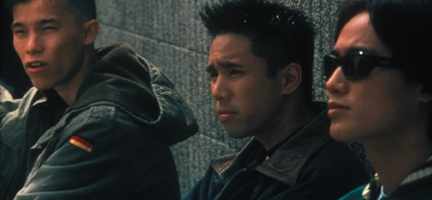
Before progressing with my analysis, an overview of the plot and characters of Better Luck Tomorrow warrants review for those unfamiliar with the film. Better Luck Tomorrow follows the exploits of four young Asian American teens as they live double lives, fulfilling model minority expectations during the day at school while rebelling against their suburban confines at night by embracing criminalization as an outlet for their frustration and boredom. The four teens who capture the majority of the audience’s attention are: Ben Manibag, the film’s central protagonist (played by Parry Shen), his socially awkward best friend Virgil (played by Jason Tobin), Virgil’s abrasive cousin Han (played by Sung Han), and Ben’s friend and sometimes rival Daric (played by Roger Fan). Daric leads the group on a series of misadventures, beginning with selling cheat sheets, escalating to larceny and finally murder. The fifth Asian boy is named Steve (played by John Cho). He is the film’s antagonist and the subsequent victim of the four teens’ anger and frustration. Steve’s wealth alienates him from the other young men, in addition to complicating his relationship with Stephanie (played by Karin Anna Cheung). Wanting to teach his parents a lesson about “real life,” as opposed to conceding to the façade of economic success as identity, Steve hires the other teens to help him steal from his own home. Instead, the four teens, envious of Steve’s social position, decide to teach him a lesson. The confrontation ends with Steve’s death, ultimately leading the film to an unresolved ending.
The Neoliberal ‘Agenda’: Some Background

Recent cultural criticism has analyzed these troubled Asian American teens within the context of a social theory known as neoliberalism. Simply put, ‘neoliberalism’ can be summed as an anti-Keynesian economic theory which promulgates the free market system, deregulation and privatization as models for individual and collective success, causally linking policies which revert wealth to a select few with industriousness and individuality. As a result, Asian American identity becomes meshed with capital production, as they are used by forces of white supremacy to promote the ethic of “personal responsibility,” a principle which obfuscates the government’s role in social mobility by promoting the Asian American’s rugged individuality. Better Luck Tomorrow completely omits parental figures from the narrative about four high-achieving Asian American teens. The absence of authoritative parental figures functions both as a theme and a recurring metaphor, as several of the characters live in a world that mirrors a neoliberal economic context. Existing as self-sustaining islands unto themselves, parents, in the world of Better Luck Tomorrow, become akin to overbearing, burdensome government regulation (Jun 129). For many Asian American Studies scholars, neoliberalism makes possible the cultural economy (and the affective economy) out of which the Asian American as a “model minority” emerges.
The term model minority was coined in 1966 in a U.S. News and World Report article praising the accomplishments of Japanese and Chinese Americans in the face of racism, comparing them favorably to African Americans. There is not the fear of Asian bodies such as there exists trepidation about black bodies; therefore, their favored status in the eyes of neoliberal powers belies the racist intent institutions of authority have for Asian Americans. Prominent literary critic and Asian American writer Frank Chin agrees with contemporary assertions that white anxieties towards the presence of Asian Americans exists behind a mask of misleading praise and adulation for Asian Americans’ apparent accomplishments. Chin argues, “…that for Asian Americans the result of living under racial oppression was the absorption of dominant society’s perceptions of Asian Americans as generally docile and submissive…Asian Americans then became the subjects of ‘racist love,’ versus ‘racist hate’” (Nguyen 2). Chin’s concept of ‘racist love, versus racist hate’ plays into an overarching language of love that, as it plays a role in American racial interactions, explains a phenomenon that allows white hegemonic power to view acceptance of their doctrines and principles as being tantamount to expressions of love for the nation. This conflation allows dominant power to thrive off of a logical fallacy that positions Asian Americans as the straw man in an ongoing racial conversation between whites and blacks.
Model minority compulsions are relevant and powerful because of the distance they create from blackness and the proximity it allows toward whiteness—a proximity that is bound by notions of love for nation and the nation’s purported love for the model of all minorities. By participating in the model minority stereotype, Asian Americans affectively embrace their successfully assimilated status. The cast of Better Luck Tomorrow That Better Luck Tomorrow is set in a well-to-do L.A. suburb works to support the Asian American identity as separate from the “ghettoization” seen in depictions of black and Latino youth culture. The film illustrates an incorporation into the economic system, seen affectively in the regimented actions of the characters as they pursue college; however, the suburban setting does not dispel notions of resistance that, simultaneously, lead the characters to express feelings of entrapment and unhappiness within walls that illustrate their connectivity to the American capitalistic system.
With regards to the film, the youth of the protagonists establish this film as a narrative concerning America’s future, as it pertains to a handful of second-generation Asian American immigrant children. In that way, the film addresses the consequences of past U.S. imperialist military and legal actions overseas that resulted in the presence of a relatively new group of citizens, whose inability to successfully navigate their model minority status is illustrative of the fault lines in American racial stratification, but also implicates the need of dominant powers to create racial boundaries in order to protect white supremacy. The four young men—Ben, Daric, Virgil, Han—sub-consciously recognizing the boundaries of racial identification, metaphorically shown by the presence of the enclosed suburban gate, begin to commit various acts of rebellion against varying forms of authority. In this way, they act as bad subjects, although the characters do not fully embrace this role since they have internalized Western tropes concerning Asian American racial identity.
The Good, the Bad, and the Ugly Sides of the Model Minority Myth
Ben asserts himself as a bad subject, initially, by becoming involved with Daric’s cheat sheet scheme. Ben shows the he has little respect for educational integrity, as he allows other students in class to cheat off of him for no monetary reward. Ben reduces learning—which ostensibly should be about opening one’s mind and following one’s mental talents—to the dogged pursuit of a verifiable and quantifiable number that is supposedly predictive of future success. Ben, who wants to score a perfect SAT, begins a process of rigid repetition of words in order to improve his verbal section. These words—“quixotic,” “temerity,” and “catharsis”—form subheadings, dividing the film into unofficial chapters based on Ben’s mood. However, there is a sense that he is not deriving any practical meaning from his repetition, despite the overt presence of the words on the screen. For example, Ben studies the word “quixotic” before beginning Daric’s cheat sheet scam. Quixotic—meaning one who is foolish, especially in pursuit of ideals (usually romantic ideas)—surmises both Ben’s attempts to woo Stephanie and the ideas he absorbs from Daric, who sees the racialized cycle of the model minority as proof of his own self-importance. The second word, temerity— a rash or reckless act—transitions the film into its second act and is illustrative of Ben’s descent into the gangster lifestyle. As the group progresses in their criminal ventures, however, Ben shows reluctance to get further involved, which propels the film into its third act and the final word in the succession: catharsis. However, despite convention, Lin defies expectations of an emotional release in the off-balance way that he concludes his film.
Daric, the class valedictorian, is a perfectionist on a level above even Ben. More so than his friends, Daric appears to recognize the way social and economic mobility is directly tethered to the opportunities gained from education. Recognizing his role in the politics of racial identity formation, he sees the benefits of his model minority status, allowing him to believe he, and those like him, are “special” and above any sort of reproach. Seeing life as a game, Daric chides Ben for working at a fast-food restaurant, telling him: “You know this is all bullshit right? It’s just a game. People like you and me, we don’t have to play by the rules…” (BLT). In this fashion, Daric is asserting the superiority of his model minority status that ironically enables rather than circumvents his transgressions. Thus, his ‘bad subject’ behavior is not enacted out of a resistance to but, rather, the very product of dominant ideology. Since the model minority identity is constructed, in part, from racial stereotypes circulated by dominant imperatives, the model minority is always vulnerable to coercive suggestions from dominant ideology. In addition to serving as Ben’s model minority role model, Daric is an additional romantic rival for the passions of Stephanie. Daric, in a display of arrogance, bets Virgil $100 he can manage to ask Stephanie out on a date successfully. Previously, Daric had recognized Ben’s interest in Stephanie while the three were in gym class. Leering at her, he remarks to Ben with amazement, “Look at that ass!” (BLT) Daric views Stephanie as a commodity from which he can profit, nothing but a pretty face and a nice body to satisfy his need to feel superior. Daric’s self image is ultimately questioned, literally and metaphorically, by Steve. Seeing the model minority for what it truly is, Steve sees a disjuncture between economic success—the ultimate goal of the Asian American model minority—the American Dream, and Asian American cultural productions.
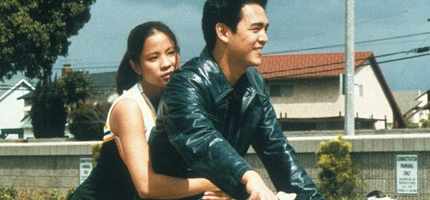
Steve’s important contribution to the story comes when, at batting cages with Ben, he questions the fundamental values structuring ones pursuit of economic and social ‘success’. He asks Ben if he is happy, to which Ben replies: “I don’t know.” Steve envies Ben’s noncommittal answer. Steve troubles the notion that economic success automatically equals happiness; because, by his own admission, he has everything: loving parents, luxury cars, nice education, an assured Ivy League offer, and a beautiful girlfriend. Yet Steve feels trapped within his happiness, believing once you have material satisfaction there is a pressure to maintain and accumulate more material objects in a never-ending cycle. Though all of the characters pine for the days when they can get an Ivy League education and become successful on the open market, Steve’s predicament—the need to be free from the interminable cycle —foreshadows a potential problem for the model minority once he has achieved economic success. Specifically, Steve’s situation complicates the idea of the model minority by raising the question: how does the Asian American as subject continue to strive for excellence once he attains every advantage? Thus, Steve decides to take matters into his own hands and attempt to break the cycle by stealing from his own home—attempting to embrace the bad subject role (an embrace perhaps differently structured than Daric’s), but like Daric, ultimately failing.
Daric is never shown to contemplate such issues. Harshly, Daric’s rationale is clearly illustrated after he and Virgil kill Steve and then subsequently steal $300 from Steve’s wallet to pay Jesus so that they can bury Steve in his Jesus’ yard. Daric internalizes the model minority myth that self-interest equals success more than any of the other characters. He, after Steve’s death, takes a smiling picture for his senior photo, illustrating his commitment to maintaining the appearance of a stable racial identity despite his actions. The captain of the academic decathlon, Daric’s logic of ‘rational’ self-interest and cost-benefit analysis is evident in a surreal, morally objectionable question he poses to one of his debaters: “All right, the topic is population control. Why retarded children and handicapped people should be executed in order to keep the population down” (BLT). The question is uttered casually, almost tangentially, and it vocalizes the extent to which Daric has rendered life into emotionless abstractions. After Virgil’s attempted suicide, Daric shows little concern for Virgil, at first making a joke at his friend’s expense. Daric’s mind quickly races to find a solution to preserve his future: “Do you think he’s going to talk? Let me think…Let me work this out” (BLT). Therein, Daric is caught in an in-between space. Though he puts in motion the plan that ends up killing Steve, he is ultimately bound to the system of expectations that will provide him with a comfortable future. Thus, his acts of rebellion against authority, are effectively counteracted by his absolute devotion to the model minority myth and his imagined superiority.
While all of the characters are caught between good and bad subject identities, Stephanie Vandergosh is literally and symbolically in an in-between space as she is undoubtedly ping-ponged between Ben and Steve and Daric. Stephanie, like her male counterparts, cannot be categorized as purely representing either the model minority or bad subject; in her case specifically, she changes depending on whether she is with her boyfriend Steve or Ben. Vincent Brook, in his book A Land of Smoke and Mirrors: A Cultural History of Los Angeles, defines the differences in Stephanie’s character as vacillating between “submissive” and “emasculating:”
Archetypally split in half, Stephanie plays the butterfly with Steve and the dragon lady with Ben. The song “Butterflies” (by the Fontanelles) even accompanies her and Ben on their prom date, which was only granted to Ben because Steve doesn’t go in for all of that “superficial bullshit”. (Brook 204)
Beautiful, intelligent, and driven, Stephanie appears to portray the good subject throughout the film. However, Stephanie’s status as an adopted Chinese American allows the film to comment on the difficulty of stabilizing a transnational identity, which Stephanie has trouble doing throughout the film, leading her to rebellious actions that undermine authority and social convention.
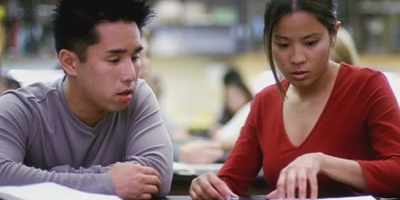
Stephanie occupies a border position between her Chinese American racial heritage and Euro-American upbringing, her dual-personalities perhaps a metaphor for her dual ethnic identities. The film defines Stephanie as a Chinese American and Ben as Filipino American, yet there is a certain amount of ethnic blending in the film that combines the disparate ethnicities under a single umbrella term “Asian American”. At school, other students labeled Ben and his friends ‘the Chinese mafia’ despite the fact that the precise ethnicities of the main characters are never stated with the exception of Ben and Stephanie. Multiculturalism, under the U.S. neoliberal framework, creates space for ethnic minorities to become visible in the socio-economic system. Unfortunately, such identities are often irreducible and problematic as different ethnicities have their own unique experience that cannot be adequately explored. Stephanie’s arc in the film, then, can be seen as trying to find her voice—a forthrightness she finds with Ben but struggles with in other areas of her life where she falls into expected multicultural designs of Asian American perfection.
Stephanie, like the others, acts in opposition to state authority; however, unlike her male counterparts, she wants to appropriate dominant power for herself. This becomes evident in the scene where she reveals that she wants to pursue law enforcement as a profession, relishing the idea of having a gun and pretending to shoot Ben. In this context, the would-be gun positions her as a detachment of State authority. The scene where she admits this to Ben appears to be ordinary flirtation between the protagonist and his love interest, but when Ben turns she pulls the trigger of her imaginary gun, depicting a possible future conflict with between police official and criminal and creating a poetical scenario whereby Ben, while tying to rebel, is brought down by another Asian American, Stephanie, who is also trying to rebel by enforcing the law. Interestingly, the only instance of any form of a police presence in the film arrives in the form of Stephanie, who at one destabilizes established stereotypes being an Asian American women. Another contradiction, on the one hand Stephanie wants to enforce the law—which is often constructed to support the interests of the majority—but on the other, being a police officer works against the model of the submissive Asian intellectual who should ideally matriculate to become a doctor or an engineer. Here again exists a contradiction: at the same time, though the gun in Stephanie’s case is an imaginative instrument of state authority, the gun, again, is a symbol of rebellion—albeit in a different way than for the young men in the film. But this rebellion is somewhat unsuccessful as Stephanie, though appropriating the gun for power, only wishes to become a facet of militarized state control.
Throughout her relationship with Ben, Stephanie takes a more controlling position. Early on in their friendship, Ben is afraid to have his finger pricked for a chemistry experiment, but Stephanie lightly chastises him for his cowardice, telling him to count to three and pricking him on count one. Later, on their pseudo-date prior to the dance, Stephanie takes the opportunity to define Ben, telling him he is similar to her boyfriend Steve and foreshadowing the reversal that takes place at the end of the film, wherein Ben assumes Steve’s place as Stephanie’s model minority boyfriend. Irritated at Ben’s suggestion that she is lacks any rebellious inclinations or talent at deception, Stephanie chooses to steal a CD titled “Baby Making Music,” which she gives to Ben as proof of her bad subject credentials. The title of the CD is ironic considering its sexual suggestiveness, Ben’s thinly veiled feelings for her, and the subsequent rumors about Stephanie starring in a pornographic film. The film is intentionally vague on whether Stephanie participated in the porno or not. However, her possible, if not likely, participation can be read as a commentary on classic depictions of Asian female sexual exoticism. In this instance, if true, Stephanie rebels against this by attempting to gain sexual agency by participating in the porno, but this agency is diluted by the pornography’s stereotypical portrayal of her as foreign and submissive.
Better Luck Tomorrow also reveals how constructions of masculinity are hierarchized along racial lines; or to put it more simply, how ideas about “what it means to be a man” are seen through racial lenses and valued accordingly. At a party, Ben, Daric, Virgil, and Han come into conflict with a group of lettermen who poke fun at the idea of a group of Asian boys attending a party that features cliché images of high school underage drinking and loud music. The group of lettermen take Daric to task first, appearing to have a problem with him wearing a letterman’s jacket because he plays a “soft” sport like tennis. Therein, the lettermen seek to promulgate certain rules about “acceptable” masculine identities, using sports as a differentiating point between whites and Asians. Wearing the jacket conflicts with imagined notions of male Asian American passivity and sterility. Desiring to reassert the assumed normative racial framework, one of the lettermen jokes to Ben: “…uh, I think Bible study is next door. Oh, no shit, look at this. It’s the Chinese Michael Jordan” (BLT). Ironically, Daric and the unnamed letterman both perform a similar function. Daric writes a journalistic piece about Ben being the “token Asian” on the JV basketball team, without printing the coach’s perspective because it did not mesh with Daric’s purpose: to write an attention-grabbing article about racism in high school sports that would make Daric more competitive on his college application.
It is Daric who shatters Ben’s belief in American meritocracy, just as the lettermen shatter Daric’s sense of superiority. Daric, viewing the world entirely through identity politics, assumes any Asian male in an athletic position such as the basketball team must, ipso facto, be a token character. The lettermen have internalized the dominant ideology which has rendered Asian American men sexually non-threatening, non-athletic, and passive. The difference between the bully and Daric being that the jock’s words originate from a position of dominance, as he is speaking as a white man. Daric and Ben are on the same continuum of permanent self-cultivation as a form of self-representation.
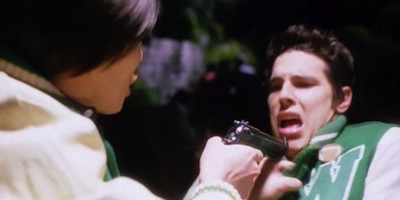
The bully’s words infuriate Daric to the point where he pulls a gun on the boy and ends up, along with Virgil and Ben, savagely beating the young man. After the confrontation between Daric and the white lettermanworld crime scene. citizens who are obscured in the narrative of United States exceptionalism. The movie presents the gangsters in the car as a potential alternative for the teens if they continue down their current path. The difference between the two factions is a difference of constructed and performed hyper-masculinity as a way to subvert model minority imperatives, versus the other men in the car who are consideredin a way that excludes them from American social/economic mobility.
Though parents are not seen in the film, Virgil frets about his father finding out about what he recently did to the white letterman, showing that the teens still acknowledge voices of authority—making them “incomplete” rebels. The teens are not completely disillusioned to notions of the American Dream; therefore, they are still “tolerable” as ethnic minorities, although they are literally caught between the racialized men—with the larger gun—next to them and their suburban homes.
The Sexual Politics in Better Luck Tomorrow
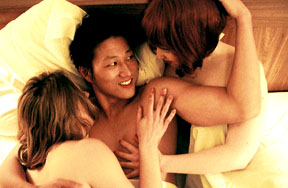
The teens in the film act, as the bad subjects, in resistance to neoliberal ideologies. Towards that end, they attempt to create identities that can negotiate the stereotypes of the model minority—while at the same time taking advantage of the social and academic benefits inherited from such a racial formation. Therefore, to varying extents, the characters in the film have affectively embraced their racial identity, even as they chafe against it. Therefore, a cycle occurs where the characters in the film attempt to break free of sexual stereotypes, by embracing neoliberal ideas of masculinity or femininity, only to fall short and once again occupy an in-between space. Taking place at a key period during their development, a time when the teens in the film are beginning to form their sexual identities, the teen boys in the film maintain their connection to dominant suggestions about masculinity, resulting in a performance of hyper-masculinity that can be connected to the boys’ embrace of suburban gang culture.
This phenomenon can be seen in the character of Han, who can be considered to be the least fleshed out of the four main protagonists. Though he is shown to be confident sexually, he is reduced to a pastiche of stereotypical hyper-masculinity (he is constantly smoking and has a threesome with two white women), which crumbles at the film’s end when Virgil attempts to commit suicide and Han is the only member of the gang there to console him as he lies comatose. In addition, Han’s machismo does not prevent him from feeling the same social frustrations as Ben or Virgil; rather, his inability to channel his emotions in a positive and socially acceptable way leads him to beat Virgil on multiple occasions.
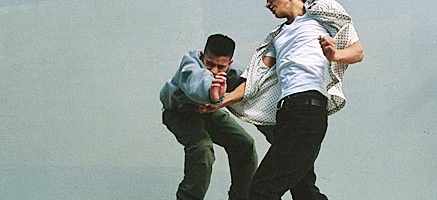
On the other hand, Virgil–since he cannot obtain the actual thing–is consumed with sexual fantasy. At the beginning of the film, Virgil’s apparent lust for a much older woman with large breasts, his repeated desire to attend college mainly because of the opportunity to sleep with women who possess both looks and intelligence, and his obsession with pornography suggest that Virgil is seeking a woman who is a “complete package,” a sexual fantasy that attempts to be fulfilled when the boys later rent a prostitute for the night. Instead of eventually gratifying their desires in the third act, Better Luck Tomorrow continually chooses to frustrate Virgil and Ben’s attempts at sexual determination. For Ben, he is trapped in an in-between space in his relationship with Stephanie. Though he feels attracted to and protective of her, he is unable to take steps towards actualizing a romantic relationship with her because of Steve. For Virgil, the group’s weakest member physically and emotionally, the group’s criminal activities take a large affective toll. The least physically imposing of the group, the most socially awkward with women, yet the one most prone to bluster, Virgil was “like the little pup that kept shitting on the carpet (BLT)”. He also insists on his sexual prowess far more than the other males, despite the fact that he remains a virgin throughout the film. As a result of having the least power, Virgil took the gangster identity to heart the most, becoming increasingly volatile. As the group becomes more immersed in a pseudo-gangster lifestyle, Virgil becomes increasingly attached to his gun and the power it signifies. A phallic symbol, the gun becomes Virgil’s masculine identity as he remains a virgin in throughout the film.
The academic decathlon’s trip to Vegas brought to the fore the interesting way in which race and sex played out on-screen. Classic Hollywood depictions of Asian American sexuality has often been fraught with preoccupations about miscegenation, especially confusing since in classic films “Oriental” roles were often played by white actors. The four young men rented a room and, as a present for Ben’s seventeenth birthday, purchase a white prostitute for a night of debauchery. The idea of four Asian teenagers purchasing a white prostitute, as opposed to four white boys purchasing an Asian prostitute in search of the exotic, illustrates both the teens’ desire to imitate ideas of Western heterosexual masculinity and also a supposed reversal of sexual expectations. Ben loses his virginity to the white prostitute in the hotel room in an unsatisfying sexual encounter. For Ben, a character who has no sexual agency, his first intimate encounter happens with little input or direction on his part. Ben had no knowledge of his friends’ idea to purchase the prostitute and was ignorant of their willingness to collectively share her for the night.
From the outset, the prostitute categorizes the four young men along model Asian American stereotypes. When first entering the room, the sex worker asks if the four teens are some kind of “computer group,” positioning them as nerds. During their time together, the white prostitute takes control of the proceedings with Ben, informing him of the rules of her practice and relating to him that she always leads. When it is Virgil’s time to enter the room with her, he pulls out his gun when the two are about to have sex, causing the woman to flee. Between Ben and Virgil, the audience is able to witness both Ben’s sexual innocence and Virgil’s descent into the gangster mindset. Ultimately, both paths prevent the Asian American male from masculine self-determination.
In the end, Virgil and Ben’s inability to have a satisfactory sexual liaison with the blonde white female points to, again, a failing in the racial sexual politics that promotes whiteness as an ideal, yet still looks askance at interracial couplings. This scene comments on a problem in consummating interracial sexual liaisons in a neoliberal social framework, despite Asian Americans being posited as the positive alternative to African Americans. When Virgil takes out the gun, he assumes stereotypes of the urban thug that lend themselves to fears of black men raping white women. Ben is able to have sex with the white woman, but it is on her terms and under her rules. In this way, the film gestures toward the conditional way Asian Americans are accepted in a neoliberal society. When Virgil asserts his masculinity—undoubtedly over-asserting it due to his model minority status—the woman quickly abandons the situation, denying Virgil agency. In her article “The Cultural Politics of Emotion: In the Name of Love,” Sara Ahmed explains that love and femininity are inextricably tied to the nation:
The reproduction of femininity is tied up with the reproduction of the national ideal through the work of love…such a narrative not only confirms heterosexual relationships as a sign of obligation to the nation, but also constitutes mixed-race relationships as a sign of hate. (Ahmed 124)
Steve cheats on Stephanie in the film with one of his wealthy, private school classmates, an unnamed white girl who Ben refers to derisively as “Barbie” (BLT). Illustrating the process by which race and ethnicity become altered, Ben sees Steve’s fraternization with his secret girlfriend as a betrayal of their culture and an abrogation of his responsibility to reproduce community and the nation through heterosexual relationships (Lee 62). Ben’s pursuit of Stephanie can be read as good subject behavior that is loyal to the Asian community. But his sexual identity is frequently rendered powerless. Even in his interactions with a prostitute, Ben indirectly falls into established stereotypes.
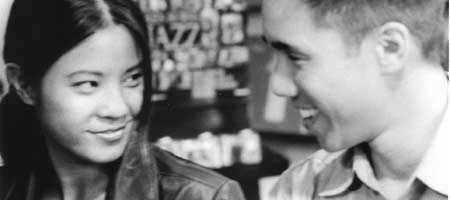
In a surprising twist, it is the quiet and unassuming Ben, and not the brooding Han, excitable Virgil, or smug Daric, who kills Steve. In dream-like, time distorting series of scenes, Ben evaluates his relationship with Stephanie and, when seeing the wounded Steve laying prostrate on the floor, seizes the opportunity and brutally beats Steve to death with a bat. Revealingly, Steve had just previously confessed to Ben that he felt bad for mistreating Stephanie and would do right by her from now on. With feelings equal on both sides, Ben had no choice but to interpret his situation regarding Stephanie and Steve as a zero-sum game, wherein ruthless self-interest ultimately prevails over the perceived value of Steve’s life. Killing Steve, while appearing to be an act of rebellion, is more accurately read as an act that, for the first time, allows him the power to determine his own sexual agency and begin a relationship with the “model” girlfriend.
Conclusion
What that means for Ben and his friends is unknown as the film chooses to let the murder remain unresolved. In addition, many of the characters are left unresolved as well, with the audience left only to speculate about their future. The film ends with Ben walking down the street and getting picked up by Stephanie in a brand-new Audi convertible (once again, it is Stephanie who is in the literal driver’s seat of their relationship). Stephanie wonders as to the whereabouts of Steve and then reveals her feelings for Ben, culminating in a kiss. In a scene reminiscent of the famous ending to Mike Nichols’ The Graduate (1967), Ben does not react to the kiss, and the two say nothing for a while as the camera lingers on the supposedly happy couple, neither looking particularly jubilant. The knowledge of Steve’s death is the unspoken secret which is represented in the silence at the end of the movie, but the silence also signifies an unknown future. While the film is intentionally ambiguous, one possible reading of the ending is that punishment is constantly deferred—Virgil even survives his attempted suicide—precisely because of the four teens’ status in the neoliberal racial paradigm. As model minorities and Asian American males, they are not subject to assumptions of criminalization that black/brown bodies are and, as seen in the Daric-letterman confrontation, Asian American males are assumed to be non-threatening. In the end, Ben resolves to do nothing about Daric, Han or Virgil, claiming all he can do is more forward; and as he sits in a luxury car, driving into a future with his enrollment in college assured (for the moment) and his relationship with Stephanie established, Ben appears to have physically stepped into Steve’s shoes, inheriting Steve’s cultural distinctions as well as his persistent unhappiness—still trapped.
For Justin Lin, Better Luck Tomorrow represents an opportunity to raise important sociological questions, not answer them. Implicit in the narrative is an underlying question that asks: how does one properly rebel against dominant forces? Moreover, the film, existing without a true antagonist of any kind, begs the question: who do we blame for Steve’s death? The film does not provide an avenue for proper rebellion, nor does the film provide a scapegoat for the crime of Steve’s murder when the easy route would be to turn Ben into a villain and have him get his comeuppance in the finale. Ben can be seen as an anti-hero, but to me, he simply seems confused. Lin leaves all of the primary characters affectively adrift and in a state of unease. Neoliberalism exists as a kind of shadow entity–the dark matter of the film, Better Luck Tomorrow’s tone and the model minority stereotypes are evidence of its existence, but it’s difficult to accuse any individual of wrongdoing. Even the bully letterman likely pays little attention to where/how his ignorance arises: his criticisms of Ben and his friends are reflective of a worldview that both whites and Asians have adopted.
All of the major characters in the film attempt acts of rebellion, yet their actions are never quite successful in detaching Asian American identity from established stereotypes. For Lin, there is no visible answer. Yet, the film troubles the white-Asian dynamic and probes for solutions. Examining depictions of good and bad subject manifestations is likely the best route to uncovering such an answer.
Works Cited
Ahmed, Sara. “In The Name of Love.” The Cultural Politics of Emotion. New York: Routledge, 2004. 123-43. Print.
Better Luck Tomorrow. Dir. Justin Lin. By Ernesto Foronda and Justin Lin. Prod. Julie Asato and Justin Lin. Perf. Parry Shen, Jason Tobin, Roger Fan, and Karin Anna Cheung. Paramount/MTV, 2002. DVD.
Brook, Vincent. Land of Smoke and Mirrors: A Cultural History of Los Angeles. New Brunswick, NJ: Rutgers UP, 2013. Print.
“Catharsis” Def. 1. Merriam Webster Online Dictionary. Print.
Ebert, Roger. “Better Luck Tomorrow.” Rev. of Film. Chicago-Sun Times Jan. 2002: 1-2 RogerEbert.com. 11 Apr. 2003. Web.
Jun, Helen H. “Asian Americans in the Age of Neoliberalism: Human Capital and Bad Choices in a.k.a. Don Bonus and Better Luck Tomorrow.” Race for Citizenship. 123-47. Print.
Lee, Ruthann. “Ambivalence, Desire and the Reimagining of Asian American Male Identity in Better Luck Tomorrow.” Pimps, Wimps, Studs, Thugs and Gentlemen: Essays on Media Images of Masculinity. Ed. Elwood Watson. Jefferson, NC: McFarland &, 2009. 51-67. Print.
Nguyen, Viet Thanh. “Race and Resistance: Literature and Politics in Asian America.” Oxford Scholarship Online. Oxford University Press. (2002): 1-38. Print.
“Quixotic.” Def. 1. Merriam Webster Online Dictionary. Print. “Temerity.” Def. 2. Merriam Webster Online Dictionary. Print.
What do you think? Leave a comment.











The directing was TIGHT. You can tell the director storyboarded THE HELL out of this film. Beautifully done.
Though not a bad film, found the amatuer-ish acting very distracting in trying to get into the movie. It’s also been done before much better with Trainspotting and Requiem for a Dream.
as an asian american college student, i was not profoundly affected by this movie. in actuality, i didn’t find it to be very good, although for lin’s second film (i believe) and such a small budget, it was alright. the plot was illogical and lacked a sense of realism for me, even if ‘realism’ was touted at the beginning with the color of film used. the actors were a little too old to be realistic as high school students and so what if some of the actors’ lines foreshadowed something later in the movie? oooh…not like THAT hasn’t been done before. and as a “breakthough” film for asian americans, it in no way focused on asian american life, so it wasn’t even a movie about breaking stereotypes. sorry justin lin, one movie title for ya: yellow. been there, done that. the movie yellow even used some of the same actors.
Of course things have been done before. “Look, this movie has beginning, a conflict, a climax, and a resolution… PLEASE! It’s been done before!!!11 lol!!11” But whats stopping you from watching THOSE movies? Exactly. Even with something like cars, it runs on four wheels? Gosh, come up with something more original.
I thought this was a great film with such a small budget (even with a bigger budget, i don’t think it could have been improved much). Amateur actors you say? Do you think it would have been more believable if Matt Damon, Ben Affleck, or hell, someone asian like Jackie Chan were casted for those roles? Uh, no, because we’re too familiar with those actors so we’re reminded that its fake everytime we see their face on screen.
QUOTE: “and as a “breakthough” film for asian americans, it in no way focused on asian american life, so it wasn’t even a movie about breaking stereotypes.”
I disagree. Since when have you seen a movie with asians playing a major role in modern america? Also, do you have any idea how many types of lives “asian americans” live out? Too many. Justin Lin only portrays ONE of those lifestyles, perhaps the most common one most asians can relate to: being an overacheiver. If you want to try to portray ALL of the different lifestyles asian americans have, be my guest, but good luck making it intersting enough and fitting it into a movie people are willing to watch.
This movie was quite honestly one of the worst movies i’ve ever paid to see. Its maybe worthy of being a made for MTV movie to be shown countless times on cable television, but absolutely no more than that. The ideas behind the movie weren’t incredibly bad…the characterization, plot movement, direction, and especially the writing were.
I thought that the characterization was superbly done. I got to know the characters and I can relate to them. I mean how many movies have you seen where the characters were one dimensional? I thought that there were a lot of depth to them. From Steve being screwed up psychcologically because his parents were rich and basically left him on his own, a teen needs more than just money to live. Ben was a very deep character. He was the token straight A student aspiring to go to an Ivy league school, I mean he did his project two weeks in advance but he also had a darker side to him. Virgil was the other smart kid as we know from the voice-in early on in the movie. But he was also very childish and immature, the scene in the car right after they beat up the white kid goes to show his character, from the sudden rush of power that he got after teh beating to his realization of what the retributions might be if the cops got involved. There are some many other examples I can write about.
I liked some parts, and disliked others, needless to say this isn’t my favorite movie… But perhaps the majority of people didn’t like this film because it was had a way low budget but most importantly, American society is used to relating to a white protagonist or Asian woman but not Asian men so we find it hard to swallow and think it’s all in the amateur acting.
Thank you for this article. I am not familiar with thus movie and will have to make time to view it. It appears from this article and the comments that thus film is a vehicle to open up dialogue I see various opinions on thus film and thus is a great way to begin communication.
I think it was right after they were at the party and had assaulted the jock. When they were in Han’s car directly after that and were driving side by side with the “cholo” car (guns in toe), I thought that was a very powerful scene and probably the most powerful one in the film (other than when Ben goes nuts). I think if you saw the movie and understand it for what it was, then that scene probably got you thinking…
Great analysis, I’m looking forward to article #2.
This is a well-written article, and I enjoyed reading about this film I haven’t seen. I look forward to reading more from you.
Wow — shocked to find that the term “model minority” was coined by a human person, and exists in such a doubly racist context. I guess it makes sense then, that Better Luck Tomorrow is inherently post-Boyz N the Hood, which as an indie film kind of gave a voice to everyone. This movie did for Asian American representation what Boyz did for black Americans, although one movie is considerably, and appropriately, less dramatic.